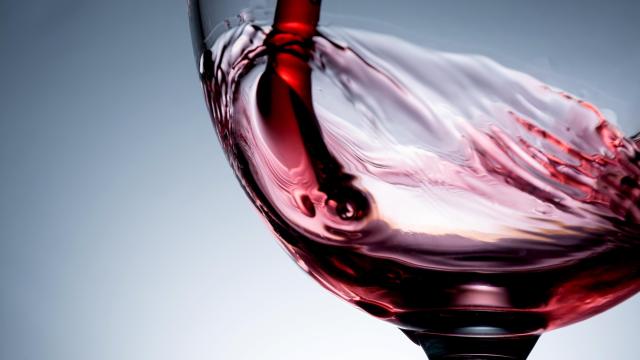New research may eventually help solve a mystery relevant to holiday drinkers. Scientists at the University of California Davis and elsewhere believe they’ve figured out why some people quickly develop headaches after drinking red wine but not other alcoholic beverages: too much of a particular flavonoid that mixes badly with alcohol. The team is already set to conduct a small clinical trial to further test their theory.
Alcohol can be a specific headache trigger for some people, while heavy drinking in general can induce them as well. But red wine headaches seem to be their own distinct phenomenon—one that’s eluded an easy explanation. Some experts theorize that it might be due to a surplus of histamine in the grape skins used to make red wine; others speculate that ample amounts of tannins or a type of preservative called sulphites in red wine are to blame. But the authors behind this current study, published Monday in Scientific Reports, have landed on a different culprit: the flavonoid quercetin.
Flavonoids are nutrients found in many plant-based foods, including chocolates and grapes. They may have potential health benefits, such as antioxidant and antimicrobial properties, and they help account for the colour of red wine. The team theorized that flavonoids might also cause red wine headaches, based on another biological quirk related to alcohol.
Some people, especially those of Asian descent, are predisposed to flushed red skin and other symptoms after drinking relatively little alcohol. This is usually caused by having a variant of certain genes that help us metabolize alcohol. One of these genes is responsible for the enzyme ALDH2, which breaks down acetaldehyde, a toxic byproduct of alcohol. Without this enzyme, or a less functional version of it, acetaldehyde builds up in the body and makes people sick.
The team hypothesized that flavonoids could cause a similar issue with ALDH2 and acetaldehyde. In the lab, they found that a byproduct of quercetin was indeed able to inhibit the production of ALDH2. Based on how much quercetin is found in a typical red wine and how it breaks down in our blood, the team estimates that a standard glass should contain enough quercetin to inhibit ALDH2 production by around 37%.
“We postulate that when susceptible people consume wine with even modest amounts of quercetin, they develop headaches, particularly if they have a preexisting migraine or another primary headache condition,” said co-author Morris Levin, professor of neurology and director of the Headache Center at the UC San Francisco, in a statement from UC Davis.
These findings are far from definitive proof that quercetin causes red wine headaches. And it’s likely that this isn’t the only important piece of the puzzle, the team notes. Some people might have an added vulnerability to this condition, possibly because of how they respond to acetaldehyde or break down quercetin. And the researchers also point out that some red wines contain much more quercetin than others, due to differences in the wine-making process, such as being made with grapes that spend more time in the sun.
The team is now planning to put their theory to a real-world test. With a funding grant from the Wine Spectator Scholarship Foundation, the researchers will conduct a small trial that will compare how people respond to red wines high and low in quercetin.
“We think we are finally on the right track toward explaining this millennia-old mystery,” said Levin. “The next step is to test it scientifically on people who develop these headaches, so stay tuned.”
